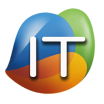Essential Productivity Tools for Small Businesses
Running a small business means wearing many hats and staying on top of every task, big or small. That’s why using the right productivity tools can make all the difference. From organizing your tasks to managing projects and tracking time, productivity tools streamline workflows, reduce stress, and give you more time to focus on growth. In this guide, we’ll cover the best productivity tools for small businesses that save time, cut down on repetitive tasks, and make team collaboration easy.
Why Productivity Tools Matter for Small Businesses
- Time Management: The right tools help prioritize tasks and stay on schedule.
- Project Organization: Productivity software organizes projects, tasks, and deadlines.
- Communication & Collaboration: Team tools improve communication and help everyone stay aligned.
- Automated Tasks: Automation reduces repetitive work, freeing up time for creative problem-solving.
- Goal Tracking: Productivity tools allow you to set and track goals, so you know what’s working and what’s not.
When your team has the right tools, they can work smarter, not harder. Here are the top productivity tools every small business should consider using.
1. Task Management Tools
- Trello uses visual boards, lists, and cards to organize projects and tasks.
- It’s ideal for collaborative projects, allowing team members to comment, attach files, and track progress.
- Trello offers flexible workflows and integrates with many other tools.
- Asana provides a structured approach to task management with timelines, project milestones, and tracking features.
- It’s great for teams that need detailed task lists and clear deadlines.
- Asana includes templates for various workflows, making it easier to get started.
- Todoist is a simple, easy-to-use tool for personal task management.
- Perfect for individual tasks and smaller teams, it lets you set priorities, deadlines, and even reminders.
2. Time Management and Tracking Tools
- Toggl is a popular time-tracking tool that records how much time you spend on different tasks.
- It provides detailed reports, so you can see where your time goes and identify ways to be more efficient.
- Toggl also integrates with tools like Asana and Trello, making it easy to track time directly from your task management tool.
- Clockify is a free time tracker that works well for freelancers and small teams.
- It offers reporting, project tracking, and reminders to stay on task.
- It’s ideal for tracking billable hours, so you know exactly how much time is spent on client projects.
- RescueTime runs in the background, monitoring how much time you spend on different apps and websites.
- It sends weekly reports, helping you understand your habits and make improvements.
- With productivity scores, RescueTime helps track how focused you are throughout the day.
3. Project Management Tools
- Monday.com is a project management tool that uses boards, timelines, and automation to streamline workflows.
- It allows for real-time updates, so everyone stays informed about project progress.
- Integrations with Slack, Gmail, and Google Drive make it easy to access other tools from within Monday.com.
- ClickUp combines tasks, projects, time tracking, and goal-setting all in one tool.
- With highly customizable features, it works well for teams with complex workflows.
- ClickUp offers a free version with plenty of features to get started.
- Basecamp is known for its simplicity and ease of use.
- It includes to-do lists, message boards, file storage, and scheduling, making it a well-rounded option for project management.
- It’s ideal for small teams looking for an affordable, all-in-one project management solution.
4. Communication Tools
- Slack is a messaging platform designed for teams, offering channels for different topics and departments.
- It integrates with tools like Google Drive, Trello, and Zoom, allowing easy access to files and meetings.
- Slack’s real-time chat makes it easy for teams to discuss ideas without long email threads.
- Microsoft Teams combines chat, video calls, and document sharing into one platform.
- It’s perfect for teams already using Office 365, as it integrates seamlessly with Microsoft products.
- Teams is a good option for video conferencing, chat, and collaborative document editing.
- Zoom has become a popular choice for video conferencing, offering reliable calls and screen-sharing features.
- It’s perfect for client meetings, team check-ins, and webinars.
- With features like breakout rooms, it supports large group discussions and smaller meetings.
5. File Sharing and Collaboration Tools
- Google Workspace (formerly G Suite) includes Google Drive, Docs, Sheets, and Slides.
- Real-time collaboration makes it easy for team members to work on the same document at once.
- It’s cloud-based, so files are accessible from anywhere with an internet connection.
- Dropbox Business offers secure file storage and sharing, with automatic backup.
- It’s great for businesses that need centralized storage and access controls.
- Dropbox integrates with popular tools like Slack and Zoom.
- OneDrive is integrated with Microsoft Office, making it easy to save and share Word, Excel, and PowerPoint files.
- It allows for easy sharing within the organization and offers real-time collaboration.
- Teams already using Office products will find OneDrive particularly convenient.
6. Automation Tools
- Zapier connects different apps to automate tasks between them.
- It supports thousands of apps, making it easy to connect tools and trigger actions automatically.
- For example, it can create Trello cards from new emails or save Slack messages to Google Sheets.
- IFTTT works similarly to Zapier, enabling automation between apps.
- It’s great for smaller tasks, like automatically posting to social media or creating to-do list items.
- IFTTT offers a range of “applets” or pre-made automations that make it easy to get started.
- Automate.io allows you to set up simple or complex workflows, connecting tools like Asana, Salesforce, and Google Workspace.
- It’s designed for small and medium-sized businesses that need affordable automation options.
- With an easy drag-and-drop interface, it’s beginner-friendly and quick to set up.
7. Customer Relationship Management (CRM) Tools
- HubSpot CRM offers features for tracking leads, scheduling follow-ups, and managing customer data.
- It’s free for small teams and includes a sales dashboard for tracking progress.
- HubSpot CRM integrates with many other tools, including Gmail and Slack.
- Zoho CRM offers advanced features like lead scoring, automated workflows, and detailed reports.
- It’s ideal for businesses with more complex sales needs.
- Zoho CRM integrates with popular email, social media, and project management tools.
- Salesforce Essentials is designed for small businesses looking to manage sales processes.
- It includes sales and customer support features, making it ideal for teams that need CRM and service capabilities.
- Salesforce offers customization options, so businesses can tailor it to fit their sales workflows.
Small businesses need to make the most of their time, resources, and team efforts. The productivity tools listed here cover the essentials, from task and time management to collaboration, communication, and automation. By using these tools, businesses can streamline workflows, reduce time-consuming manual tasks, and create a more efficient work environment.
The right tools improve productivity and give businesses a competitive edge, allowing them to focus on growth and customer satisfaction. Start by identifying your business needs, trying out a few tools, and building a tech stack that works best for you and your team.
To learn more about how trueITpros can help your company with the best productivity tools for small businesses, contact us at www.trueitpros.com/contact.




